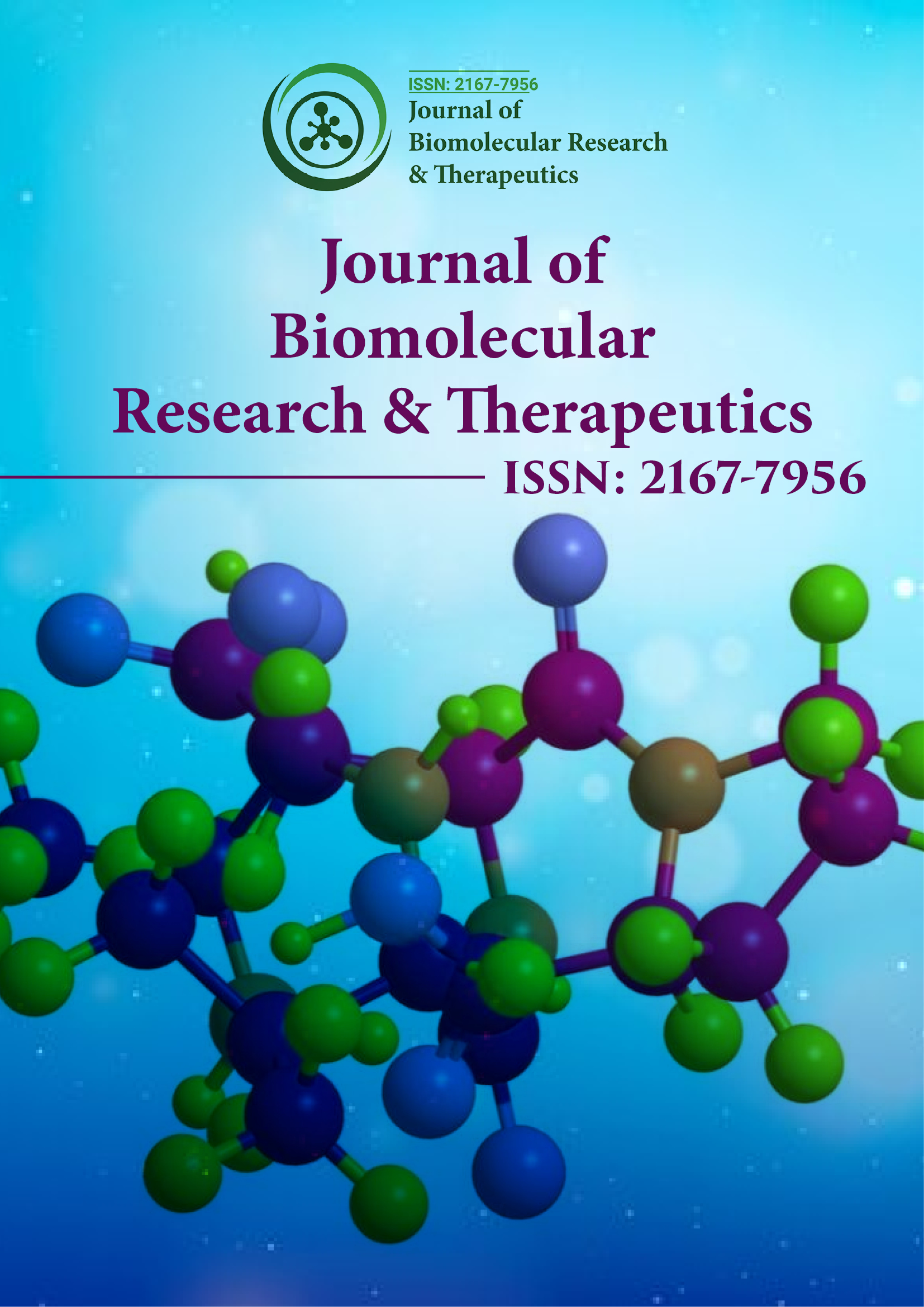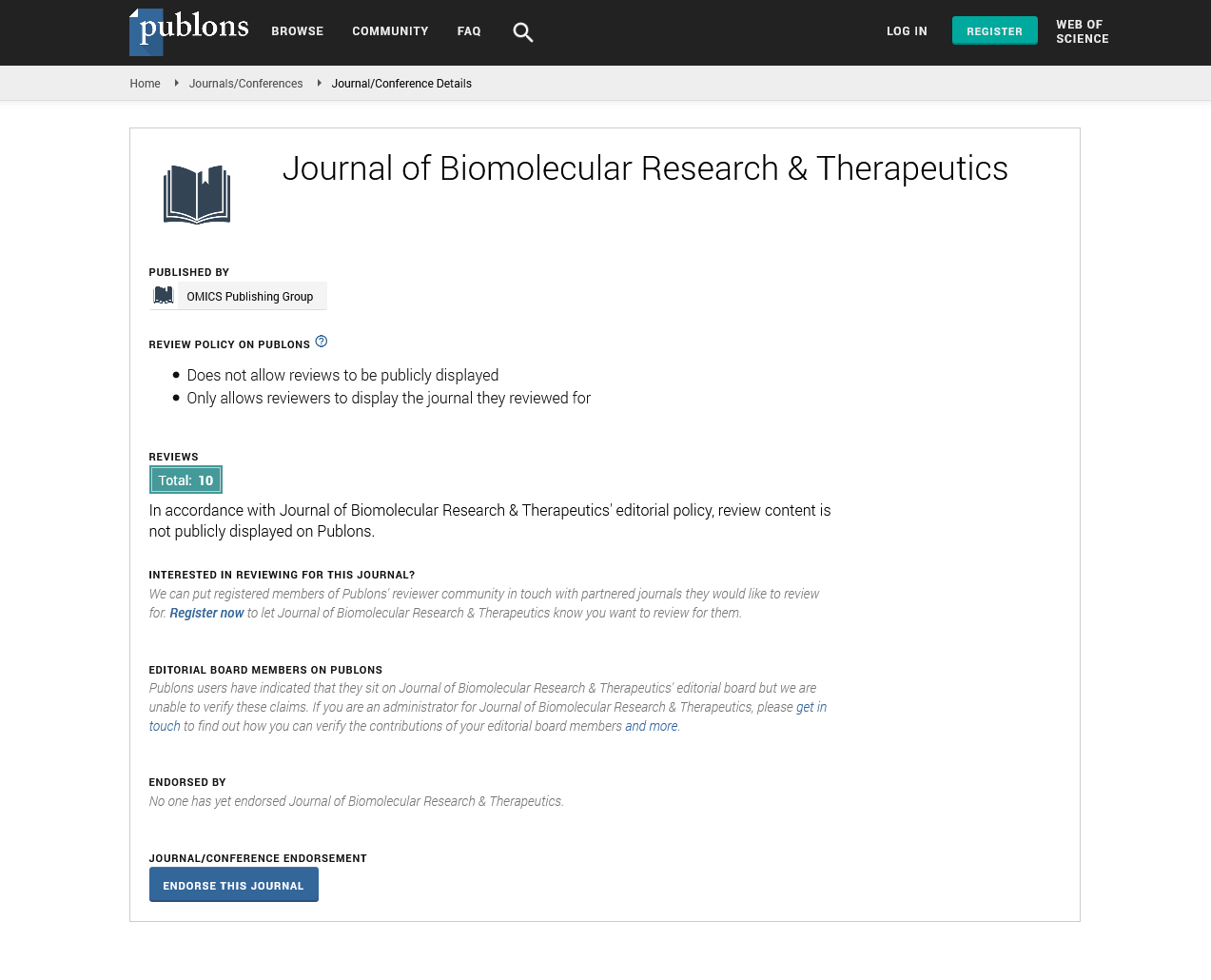Indexed In
- Open J Gate
- Genamics JournalSeek
- ResearchBible
- Electronic Journals Library
- RefSeek
- Hamdard University
- EBSCO A-Z
- OCLC- WorldCat
- SWB online catalog
- Virtual Library of Biology (vifabio)
- Publons
- Euro Pub
- Google Scholar
Useful Links
Share This Page
Journal Flyer

Open Access Journals
- Agri and Aquaculture
- Biochemistry
- Bioinformatics & Systems Biology
- Business & Management
- Chemistry
- Clinical Sciences
- Engineering
- Food & Nutrition
- General Science
- Genetics & Molecular Biology
- Immunology & Microbiology
- Medical Sciences
- Neuroscience & Psychology
- Nursing & Health Care
- Pharmaceutical Sciences
Perspective - (2024) Volume 13, Issue 1
A Complete Overview of Enzyme-Linked Immunosorbent Assay (ELISA): Principles, Uses, and Latest Advancements
Benjamin Swift*Received: 29-Jan-2024, Manuscript No. BOM-24-25309; Editor assigned: 31-Jan-2024, Pre QC No. BOM-24-25309 (PQ); Reviewed: 14-Feb-2024, QC No. BOM-24-25309; Revised: 21-Feb-2024, Manuscript No. BOM-24-25309 (R); Published: 28-Feb-2024, DOI: 10.35248/ 2167-7956.24.13.371
About the Study
Enzyme-Linked Immunosorbent Assay (ELISA) stands as one of the most proficient and widely used techniques in molecular biology, immunology, and clinical diagnostics. Its ability to detect and quantify specific molecules, such as proteins, antibodies, hormones, and pathogens, has revolutionized research and diagnostics across various fields. This comprehensive guide aims to explore into the principles, applications, and recent innovations surrounding ELISA.
Principles of ELISA
Fundamentally, ELISA is a plate-based assay that utilizes the high specificity of antigen-antibody interactions to detect and quantify target molecules in a sample. The assay typically involves several key steps: Coating the assay plate with a capture antibody, blocking nonspecific binding sites, incubating with the sample containing the target molecule, washing away unbound components, and detecting the bound target using a labelled secondary antibody or enzyme-conjugated detection system. The readout, often based on colorimetric, fluorescent, or chemiluminescent signals, is proportional to the amount of target molecule present in the sample.
Types of ELISA
ELISA can be categorized into several variants based on the specific application and detection method employed. Direct ELISA involves directly immobilizing the capture antibody onto the assay plate and detecting the bound target with a labelled secondary antibody. Indirect ELISA utilizes an unlabeled primary antibody for target capture, followed by a labelled secondary antibody for detection, amplifying the signal. Sandwich ELISA employs a pair of antibodies targeting different epitopes on the same antigen, enabling highly sensitive detection of antigens in complex samples. Lastly, competitive ELISA measures the competition between a labelled and unlabeled antigen for binding to a limited amount of capture antibody, suitable for quantifying small molecules and hormones.
Applications of ELISA
ELISA finds widespread applications in various fields, including biomedical research, clinical diagnostics, pharmaceuticals, food safety, and environmental monitoring. In research, ELISA is employed to study protein-protein interactions, measure cytokine levels, and screen for biomarkers associated with diseases. In clinical diagnostics, ELISA plays a pivotal role in detecting infectious agents, autoimmune antibodies, cancer markers, and therapeutic drug monitoring. Pharmaceutical companies utilize ELISA for quality control and drug development, while the food industry employs ELISA to detect allergens, toxins, and pathogens in food products. Environmental scientists utilize ELISA for monitoring pollutants, pesticides, and toxins in water and soil samples.
Recent innovations in ELISA
In recent years, advancements in technology have led to several innovations in ELISA, enhancing its sensitivity, specificity, and throughput. Multiplex ELISA platforms allow simultaneous detection of multiple analyses in a single sample, offering increased efficiency and reduced sample volume requirements. Microfluidic-based ELISA systems enable miniaturization and automation of the assay, leading to higher throughput and reduced costs. Additionally, the integration of nanomaterials, such as gold nanoparticles and quantum dots, into ELISA has enhanced signal amplification and improved detection limits. Furthermore, the development of smartphone-based ELISA readers has democratized access to this technology, particularly in resource-limited settings.
Challenges and future directions
Despite its numerous advantages, ELISA is not without limitations. Variability in assay performance, cross-reactivity, and susceptibility to interference are among the challenges that researchers continue to address through improved assay design and validation protocols. Furthermore, the search for enhanced sensitivity, specificity, and automation drives ongoing innovation in ELISA technology. Emerging trends such as digital ELISA, nanotechnology-based detection, and artificial intelligence-driven data analysis herald a new era of precision diagnostics with unprecedented capabilities.
Conclusion
Enzyme-Linked Immunosorbent Assay (ELISA) remains a cornerstone technique in molecular biology, immunology, and clinical diagnostics due to its versatility, sensitivity, and reliability. Understanding the principles, applications, and recent innovations in ELISA is important for researchers, clinicians, and professionals across various disciplines. As technology continues to evolve, ELISA is composed to remain a vital tool for elucidating biological mechanisms, diagnosing diseases, and advancing scientific knowledge.
Citation: Swift B (2024) A Complete Overview of Enzyme-Linked Immunosorbent Assay (ELISA): Principles, Uses, and Latest Advancements. J Biomol Res Ther. 13:371.
Copyright: © 2024 Swift B. This is an open-access article distributed under the terms of the Creative Commons Attribution License, which permits unrestricted use, distribution, and reproduction in any medium, provided the original author and source are credited.

